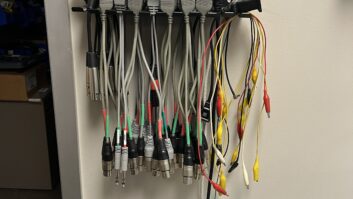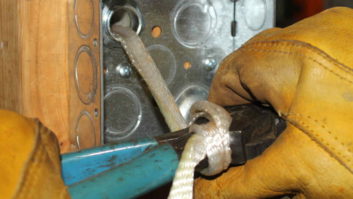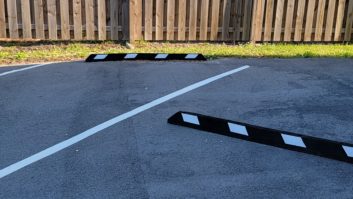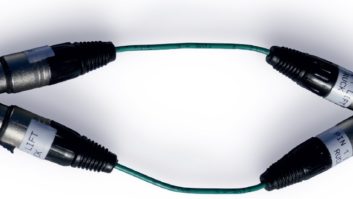I’m always amazed at the new uses for LEDs, and not just in switches or replacing flashlight bulbs.
(click thumbnail)Fig. 1: The Flashing LED Chevron Arrow Mat, powered by AA cells. Use it to provide direction to a station event or as a traffic director or roadside-emergency diverter.LEDtronics announced the release of its new Flashing LED Chevron Arrow Mat. This convenient, portable, lightweight LED Arrow Mat has three safety Light Modes of operation. Users can select from a Sequential LED Arrow Flash Mode; All-LED Arrows Flashing in Unison Mode; and All LED Arrows Always “On” Mode.
The beauty of LEDs is that they are solid-state devices that offer high shock and vibration resistance. The LED mat is the ideal safety item for station remote vehicles, vans and trucks. Use an LED mat to drive traffic into a remote site.
The Chevron Arrow Mat is energy-efficient, too, and operates with three replaceable AA cell batteries for nearly 72 hours in the arrows-sequentially-flashing mode, 48 hours with all arrows flashing in unison, and up to six hours in the arrows-always-on mode (batteries are not included).
LEDtronics thought of everything. The LED Arrow Mat has eight magnetic pads that allow attachment to ferric-metallic surfaces — like the side of your remote van. But they also included eight 1/2-inch eyelets for fasteners or cable connections. In addition to using the mat to provide direction to a station event location, it can be used as a traffic director or even a roadside-emergency traffic diverter.
* * *
Frank McCoy, a long-time friend of this column and RW, is vice president of American Media Services, a firm that upgrades radio stations.
Frank comments on the schematic in the Oct. 24 Workbench.
(click thumbnail)Fig. 2: Inspect this contactor to find out what’s causing sluggish behaviour.Unless the outputs of the audio processor (shown as a 464A Co-Operator processor in the drawing) are properly terminated, there will be significant degradation of stereo separation.
These days, with active balanced in and out the order of the day, devices downstream of the processor (and connected to the same terminals as the device depicted in the schematic) might have an input Z (impedance) of nominally 100K ohms — what we used to call “bridging.”
In that circumstance, the admittance of the 2.2K input resistors is almost three orders of magnitude larger than the input Z of the next downstream device and will be the determinant of the stereo separation, degrading it maybe 30 to 40 dB or more. That 4.4K network of series resistors will look basically like wire.
Instead, put the inverting input of an ordinary op amp at the junction of the two resistors, and choose whatever feedback resistor value you like. To keep the functional characteristics unchanged, it should be 2.2K also.
The result will be to create a Z=0 node at the junction of the 2.2K input resistors and eliminate (to 80 dB or so) any crosstalk between channels.
(click thumbnail)Fig. 3: Dried grease can cause the sluggish operation.In cases where the processor output has an impedance that truly approaches zero, this would be much less of a problem, as we mentioned. But most devices with active balanced outputs don’t run the naked op amp output right to the screw terminal. Instead it goes through a resistor of some modest value. And therein lies the problem.
* * *
Mike Breitenstein of KTRS(AM) in St. Louis sent pictures of his Harris AM RF contactors used in his array.
Instead of a rocker actuator, these contactors use a motor and gear assembly to move the contact arm from one set of contacts to the other.
Mike was experiencing sluggish activation and removed the gear/motor cover. The reason for the sluggish behaviour was that the lubricating grease had dried up, causing the gears to bind. Fig. 3 shows the dried grease Mike found on one of the gear assemblies.
(click thumbnail)Fig. 4: Compare the dried grease, left, and synthetic lubricant on the right.After cleaning the gears, he re-lubricated the assembly with a synthetic grease, which is nearly clear. A “before and after” of the gear assembly is in Fig. 4. The dried grease can be seen on the gear assembly on the left, and the cleaned gears rebuilt and lubricated with synthetic grease on the right.
Since cleaning up the dried grease, Mike reports the contactors switch flawlessly.
If your phasor or ATU uses this type of contactor, Mike advises a periodic check of the gear assembly. The mechanical linkage of the old E.F. Johnson and newer Kintronic contactors should also be a part of your AM maintenance routine.
















